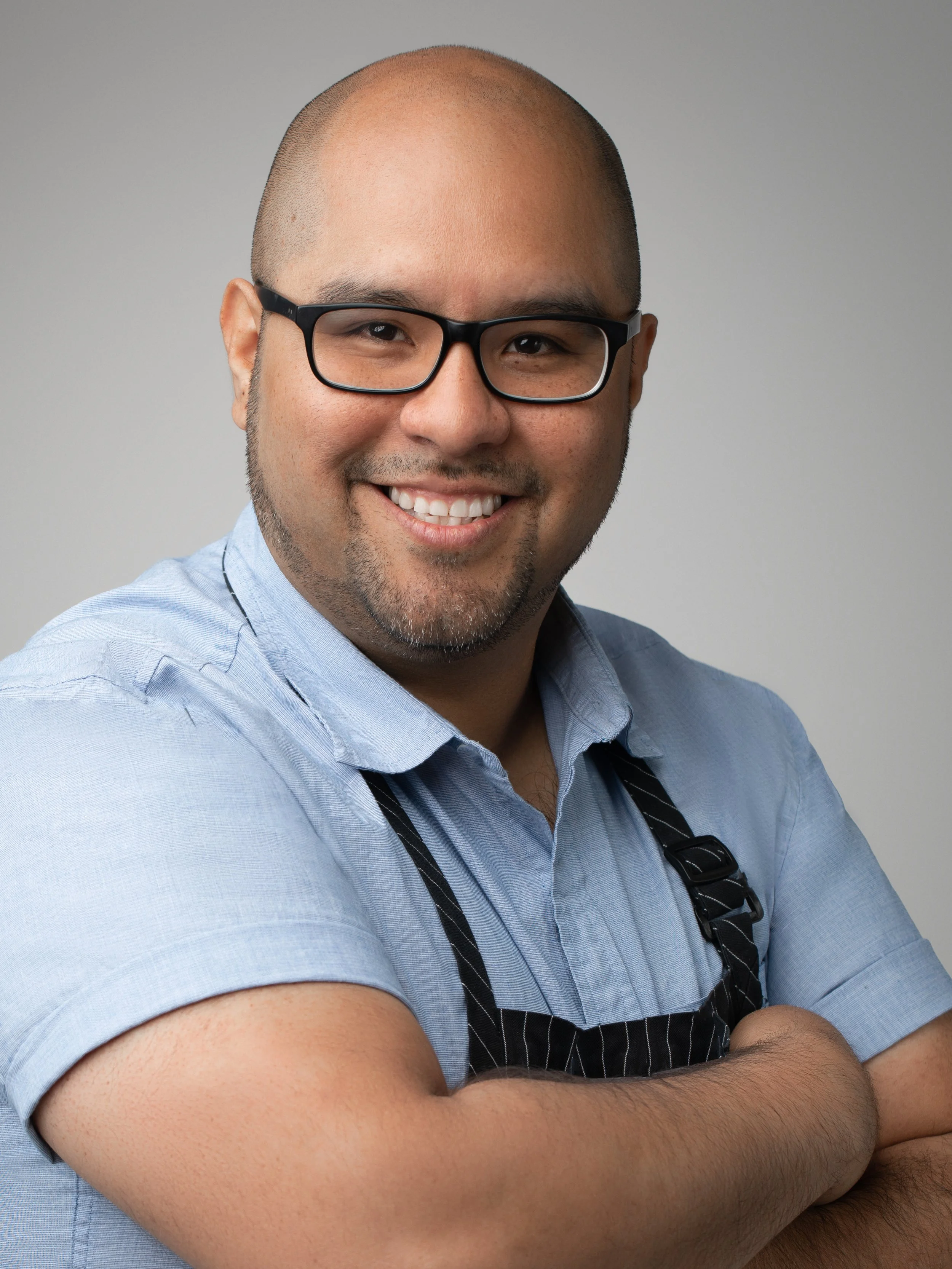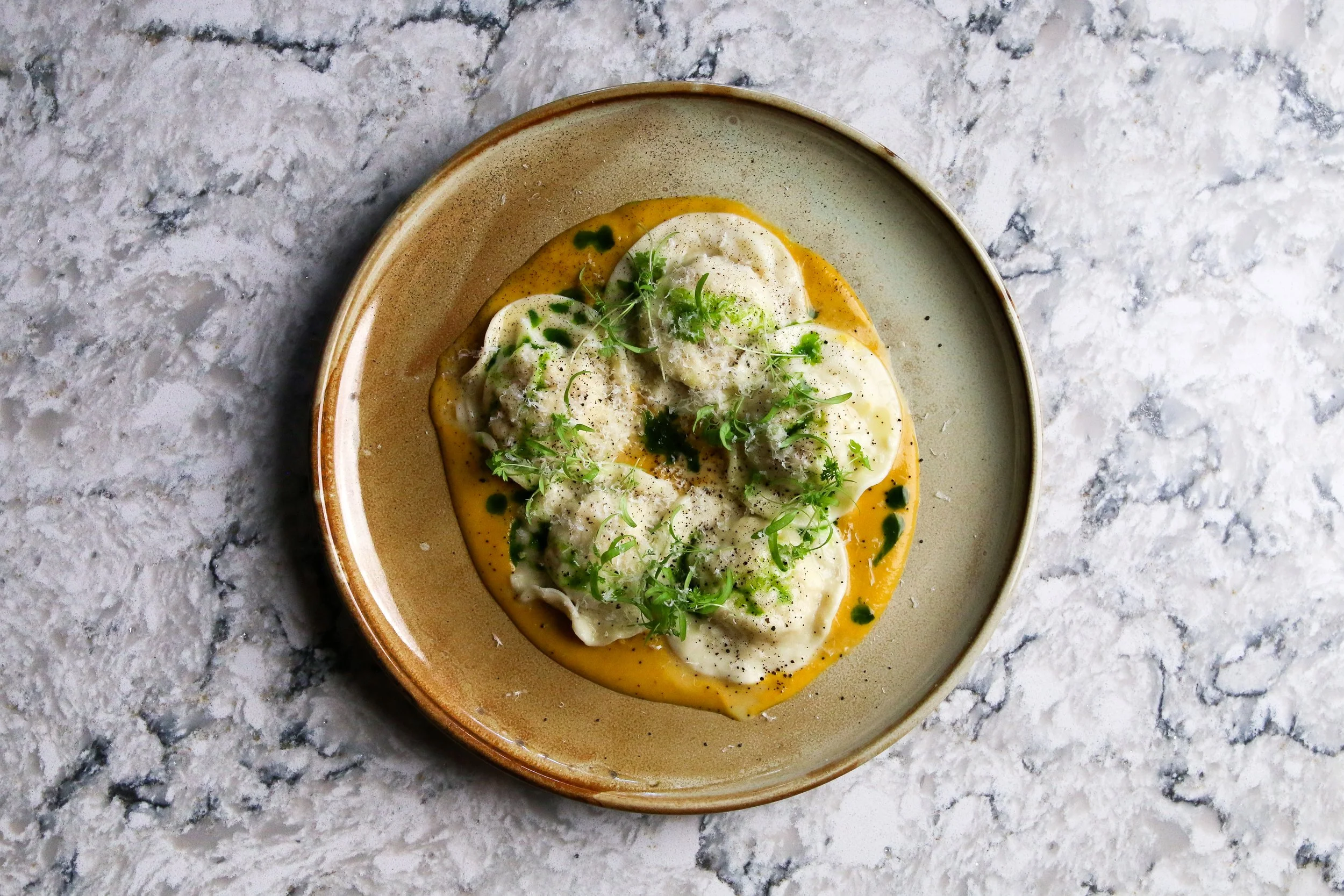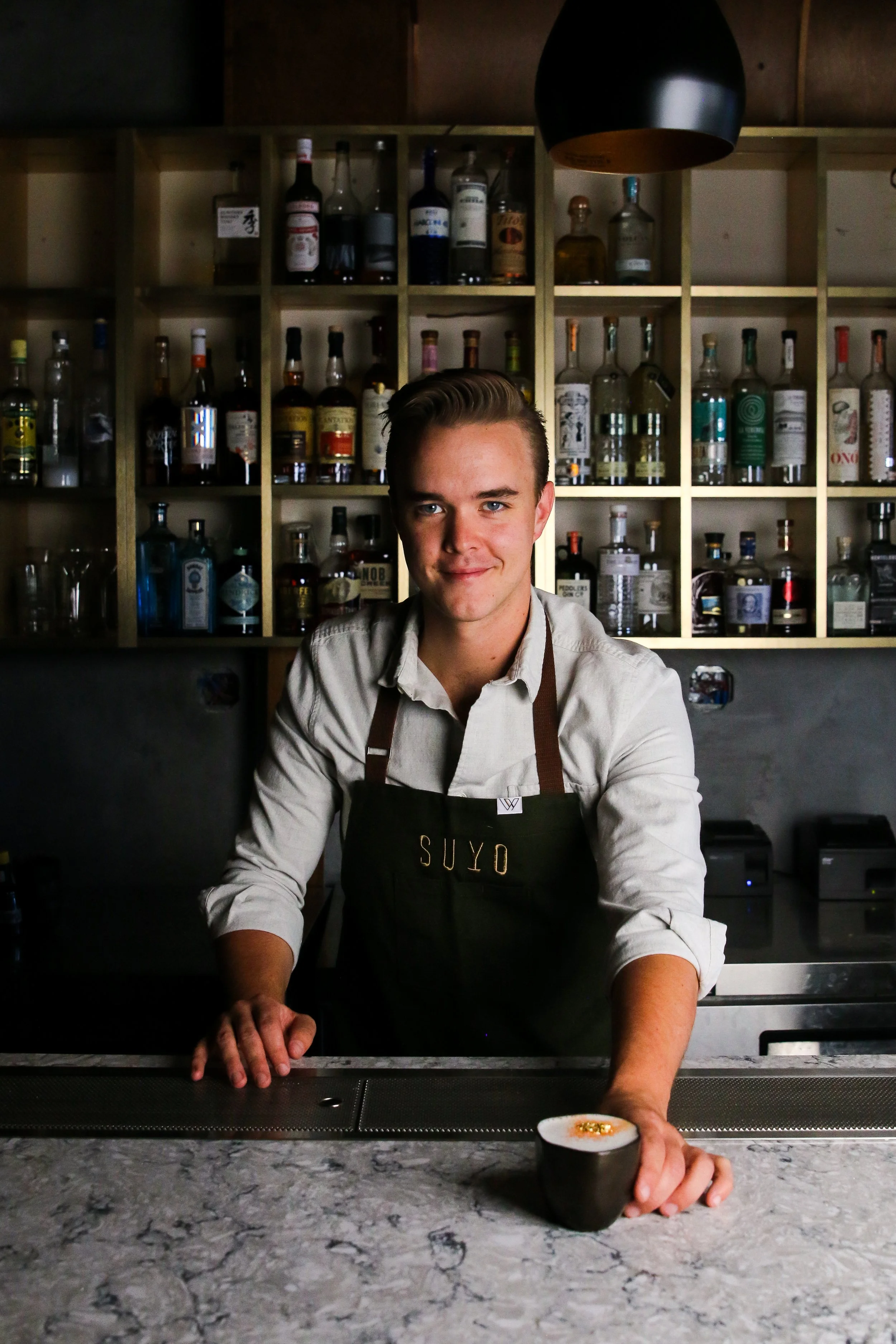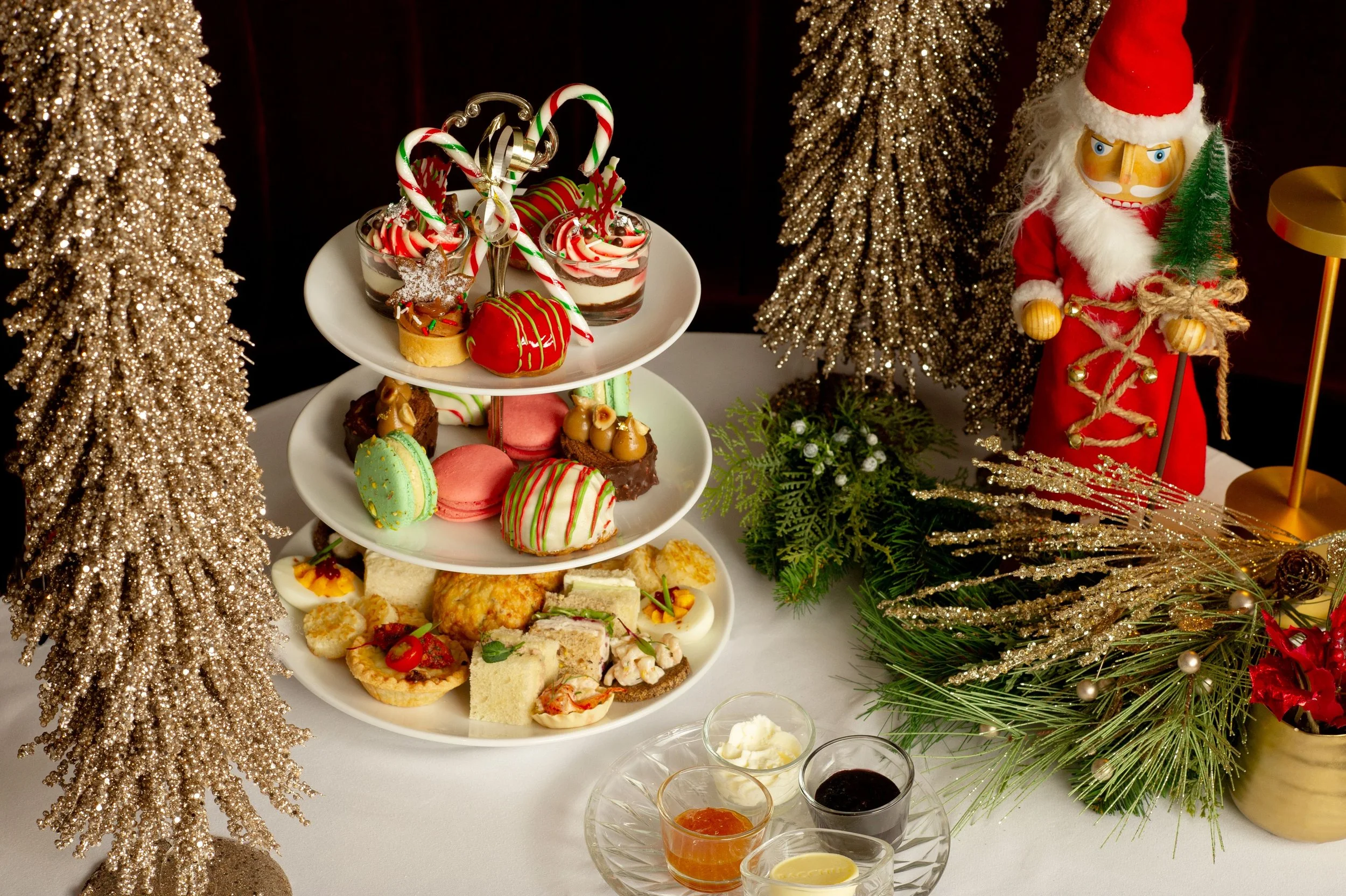Peruvian-born Vancouver chef Ricardo Valverde pays tribute to his homeland at Suyo
From ceviche to causa, the Mount Pleasant restaurant puts a contemporary spin on comida Peruana
Crispy Prawn Causa, Suyo.
WHEN THE GUERRA del Pacifico broke out in 1879, Peru and Bolivia battling Chile, the Peruvian army failed to get enough food to its troops. To help sustain them, women would prepare a simple meal of yellow potato, ají amarillo pepper, and lime juice. They offered the dish to the hungry soldiers “para la causa”—for the cause. Today, causa is synonymous with Peruvian cuisine. It’s a dish that’s close to Vancouver chef Ricardo Valverde’s heart and one he’s proud to feature on the menu at Suyo, a new modern Peruvian restaurant and cocktail/wine bar in Mount Pleasant that’s the first of its kind in Canada.
Born and raised in Lima, Valverde came to Vancouver with his family when he was 17. After two years studying computer science, he pursued his passion for food, studying at the Dubrulle French Culinary School. He went on to work at Blue Water Café, CinCin Ristorante, and Diva at the Met before landing his first job as executive chef of Ancora Restaurant. There, he created a menu that hadn’t ever been done in Vancouver: Nikkei cuisine, a synthesis of Peruvian and Japanese culinary traditions.
Having a place to call his own has always been Valverde’s dream, one he’s now realized as part of a team at Suyo. When Valverde first moved here in 1998, he asked his dad what was expected of them. “Let’s build patria,” his father said, using the Spanish term for “homeland”. The restaurant’s name is derived from a South American Indigenous word with the same meaning.
“Patria has always been important to me throughout my life in Canada,” Valverde tells Stir. “Suyo is a way to honour my country and my family and everything they sacrificed for us to be here today.
“The menu comes from things I’ve eaten in Peru, but we bring it up a notch—classic Peruvian dishes with a modern take,” Valverde says. “We’re proud to represent Peruvian cuisine.”
The “we” includes general manager and partner James Reynolds (an industry vet formerly of La Buca, Blue Water Café, and La Regalade); bartender Max Curzon-Price (the Bacardi Legacy Canadian National Champion formerly of Botanist and Clarendon Cocktail Cellar UK); and partner Felix Ng, who’s director of operations. Suyo occupies the former home Slickity Jim’s Chat and Chew, which has been entirely redone (though they saved the cedar ceiling) with banquettes, mirrors, greenery, bar seating, and private dining room.
Ricardo Valverde. Photo by Sombilon Studios
The complexity of comida Peruana has been compared to that of French food. With the influence of conquistadores, Peruvian cuisine has been shaped by French, Italian, African, Chinese, and Japanese influences. At Suyo, Valverde adds to that depth by pulling from West Coast waters.
Consider the aforementioned causa. Before the dish became essential sustenance during the War of the Pacific, its name was said to be used for potatoes, derived from kausay, meaning “life” in the Indigenous Andean language of Quechua. It was a life-giving food, with Peru having some 5,000 varieties of potatoes of all hues and shapes. Causa has evolved to become one of the most artful dishes in Peruvian cuisine. Valverde says that while tuna or chicken salad with mayonnaise are commonly used in the dish back home, “nowadays we can do anything: scallops with sea urchin or octopus”.
Currently, Suyo is serving yellow-potato causa with quail egg, crispy prawn, avocado, grape tomato, and aioli made with rocoto—a pear-shaped pepper that grows on the slopes of the Andes mountains and is known for its bold heat. The dish here is what could be called a deconstructed take on the common tower-like presentation, while retaining its characteristic colour.
Lomo saltado is an example of chifa—Chinese-Peruvian food. The dish is a stir-fry, typically cooked in a wok, but at Suyo, you’ll know when it’s being made: look for the high-flying flames in the open kitchen. “The fire is crucial in the flavour,” Valverde says. “You want that flame, that char flavour. It’s a comfort food dish, but it’s hard to do it at home.”
It originated as a “poor man’s” dish, Valverde says, typically done with an inexpensive cut of meat; at Suyo, he uses triple-A Canadian tenderloin. The classic Peruvian rice is cooked with garlic and choclo, a savoury Peruvian corn that Valverde enhances with sugar and star anise. He adds ají amarillo, soy jus, and aromatic herbs like cumin and oregano.
Ensalada Rusa—Russian salad—is popular in Peru. Suyo’s take is deliciously sophisticated, with charred avocado, beets, young carrots, green beans, and a smoky aioli. To make that creamy condiment, Valverde cooks rutabaga with kombu (dried kelp) and apple juice, then smokes it and mixes it with house-made mayonnaise and pickled shallots.
Suyo.
Ají de gallina ravioli is Valverde’s take on a beloved chicken stew, what he calls “the soul of Peru”. Typically made with walnuts, the Suyo version features cashews, and rather than having potatoes and rice on the side, Valverde stuffs them into the pasta, accompanied by pulled chicken and a sauce with onion, grana Padano, parsley oil, and black truffle. Valverde tops it all with crispy fried rice for a little crunch and gives it a kick of peppery heat.
Ceviche is a given, only at Suyo, the dish is a canvas upon which to create so many artistic variations. Options from the ceviche bar range from East coast scallops with sweet potato, Andean grains, and tart acevichado sauce to Nikkei tartare of steelhead salmon, crispy nori, cucumber, avocado, and aji amarillo.
Among the other menu highlights is anticuchero, octopus replacing the traditional skewered beef heart, with fruity ají panca pepper, yam fondant, and an emulsion of “Ricardo’s world famous” chimichurri. (“I love chimichurri,” the chef says. “I have it at home all the time.”)
The cocktails are as creative as the cuisine, Pisco Sour being a given. Suyo uses BarSol, an artisanal Pisco made in small batches in Ica, and has plans to offer all eight varieties of the classic drink made with pisco grapes. Across the menu, Curzon-Price draws inspiration from geographical and topographical aspects of Peru.
Max Curzon-Price.
“I think about the versatility of the landscape, the way that people live from that land,” says Curzon-Price. “I think about the Amazonian rainforest, the Andean mountains, the coastal deserts, the Pacific tides, and the heart of civilization. And of course I think of tradition, too.” (Curzon-Price is also the founder of Hive of Apiarists, encouraging bartenders the world over to make one of his signature cocktails using local honey.)
To create Suyo’s Oro, from the Spanish word for “gold”, Curzon-Price looked to the Inca and how they were masters of mining gold and turning it into beautiful art and jewellery. If gold could be tasted, it would be rich; to reflect that, the drink features Bacardi Ocho; Tokaji, a Hungarian dessert wine; granite amaro; and, to add even more richness, brown butter. It’s served in a clay vessel painted with ginger and yuzu, and topped with edible gold and popping candy—a sip meant to evoke rock breaking down into gold.
The wine list showcases mainly bottles from Peru, Chile, Argentina, and Uruguay. For more information, see Suyo.



















